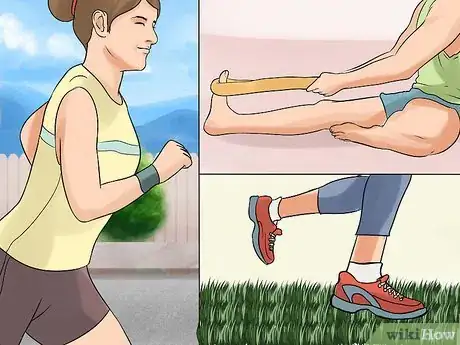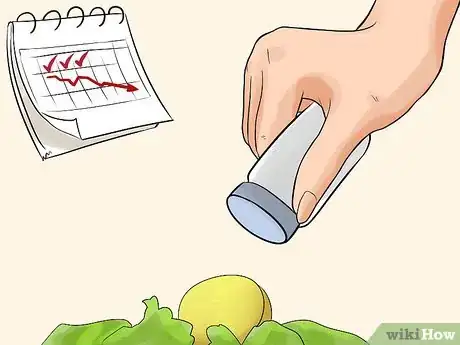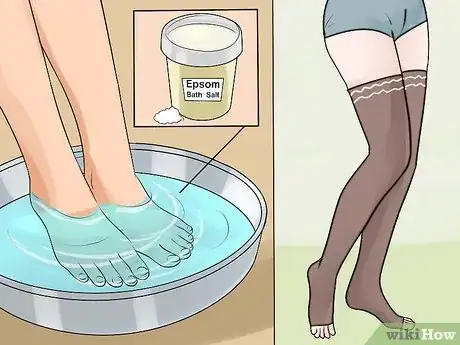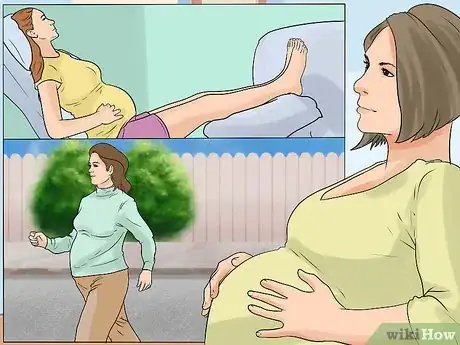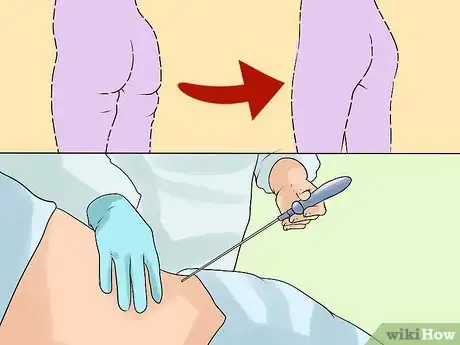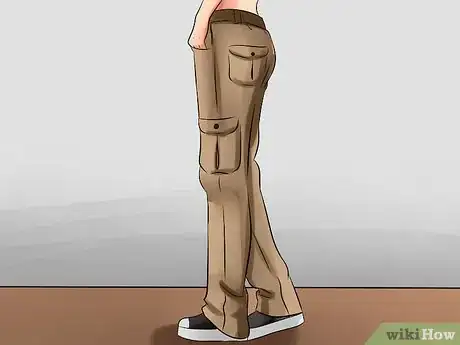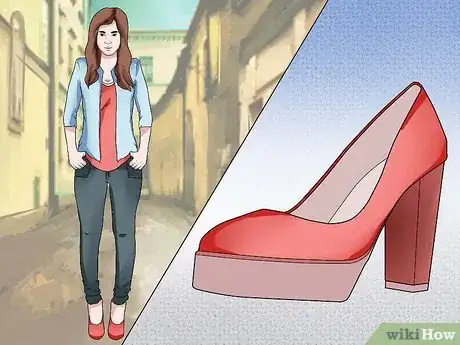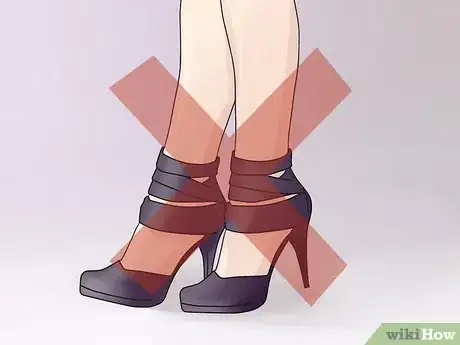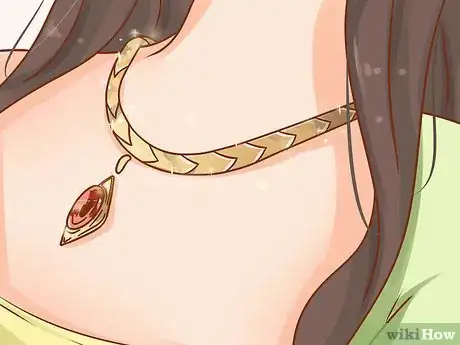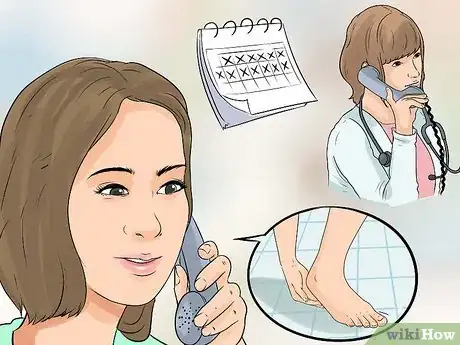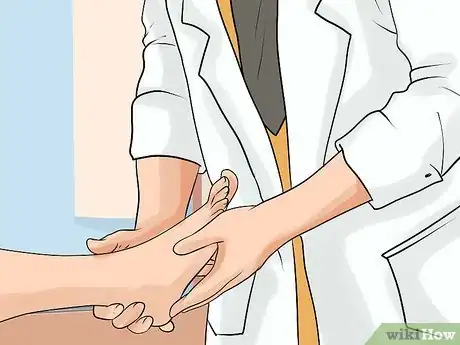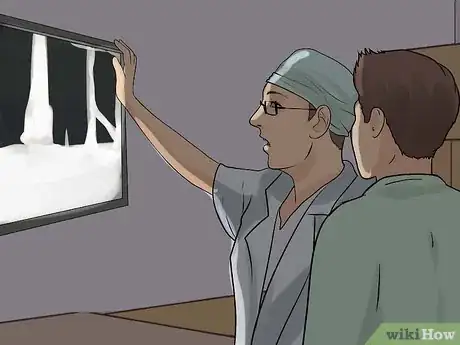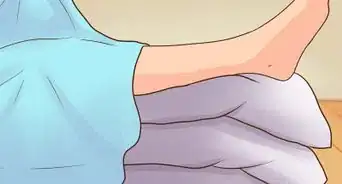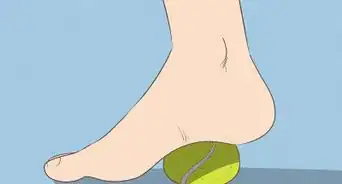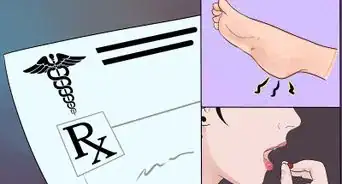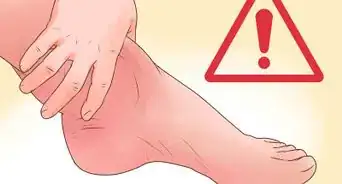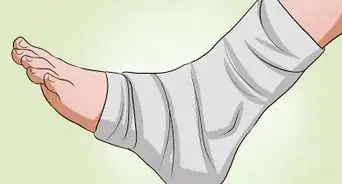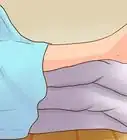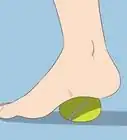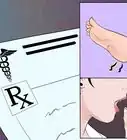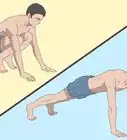This article was co-authored by Dean Theriot. Dean Theriot is a Personal Trainer and the Owner of Timberline Fitness in Houston, Texas. With over 25 years of experience in the fitness industry, Dean specializes in personal, group, and sport-specific training. Dean holds a BS in Exercise Physiology from LSU. Dean combines resistance and cardiovascular training with pilates exercises for comprehensive workouts for his clients. His sport-specific training includes football, basketball, and baseball.
There are 14 references cited in this article, which can be found at the bottom of the page.
This article has been viewed 379,527 times.
Cankles, a contraction from the term "calf-ankles," refers to chubby ankles with poor definition or a lack of distinction from where the lower part of the calf muscle terminates and the ankle joint begins. Cankles is not a medical term, but rather a derogatory term usually reserved for describing women's thick ankles. A variety of factors and conditions contribute to the formation of cankles such as genetics (perhaps the most common), obesity, diabetes, hypertension, heart disease and lymphedema. Minimizing or getting rid of cankles is dependent on their cause. Cankles caused by health conditions tend to be much more treatable than those dictated by genetic factors.
Steps
Determining the Cause
-
1Schedule an appointment with your doctor. If you perceive your ankles to be unusually thick (especially if a sudden change has occurred), then schedule an appointment with your family physician. Your doctor will examine your feet, ankles and legs, ask questions about your family history, diet and lifestyle, and maybe even take your blood pressure or send you for a blood test (to check cholesterol levels). Your doctor will determine if your cankles have a relatively benign cause (such as weight gain or edema from too much dietary salt) or if they are related to a health problem (such as poor circulation or heart disease). However, your family doctor is not a foot or circulatory specialist, so you may need a referral to another doctor with more specialized training.
- Genetically, some women have naturally larger bones/ankle joints and thicker calf muscles, which cannot be remedied without invasive surgery.
- Obesity obviously involves fat accumulation around the body, but the face, abdomen, buttocks and thighs are much more common destinations for fat deposit than the ankles.[17]
-
2See a specialist about your ankles. If your family doctor thinks your cankles are related to a blood flow problem such as venous insufficiency (a vein condition that causes blood and other fluid to accumulate around the ankle and foot) then you may be referred to a vascular surgeon for a consult.[18] If a hormonal problem is suspected (such as low insulin levels, which is indicative of diabetes), then you may be sent to an endocrinologist. If a heart problem is suspected (such as congestive heart failure), then a cardiologist might be the most appropriate doctor to see and treat your problem.
- Vascular ultrasound is a painless procedure that allows a doctor to assess the function of the veins and arteries of your lower leg.
- Podiatrists are foot specialists who may also be helpful in diagnosing ankle problems.
-
3Get an accurate diagnosis and understand the cause. Make sure you get the doctor to clearly explain the diagnosis, especially the cause (if possible), and provide you with various treatment options for your cankles. If it's determined that you have no health issues and your larger-than-normal ankles are simply due to genetics and body type, then focus more on body acceptance and overall health, while being less concerned about something as frivolous as the aesthetics of your ankles. Body shapes and sizes can be changed somewhat, but only within well-defined limits.
- Muscle fiber types and bone structure are inherited characteristics, so losing weight and working out your leg muscles may have very little impact on your cankles.[19]
- Research the various causes of thick ankles on the internet. It will give you ideas of potential treatments you can do at home, but always stick to reputable medical/health sites.
Expert Q&A
Did you know you can get expert answers for this article?
Unlock expert answers by supporting wikiHow
-
QuestionWill doing calf exercises make my cankles worse?
 Dean TheriotDean Theriot is a Personal Trainer and the Owner of Timberline Fitness in Houston, Texas. With over 25 years of experience in the fitness industry, Dean specializes in personal, group, and sport-specific training. Dean holds a BS in Exercise Physiology from LSU. Dean combines resistance and cardiovascular training with pilates exercises for comprehensive workouts for his clients. His sport-specific training includes football, basketball, and baseball.
Dean TheriotDean Theriot is a Personal Trainer and the Owner of Timberline Fitness in Houston, Texas. With over 25 years of experience in the fitness industry, Dean specializes in personal, group, and sport-specific training. Dean holds a BS in Exercise Physiology from LSU. Dean combines resistance and cardiovascular training with pilates exercises for comprehensive workouts for his clients. His sport-specific training includes football, basketball, and baseball.
Personal Trainer
-
QuestionHow do you lose ankle fat?
 Dean TheriotDean Theriot is a Personal Trainer and the Owner of Timberline Fitness in Houston, Texas. With over 25 years of experience in the fitness industry, Dean specializes in personal, group, and sport-specific training. Dean holds a BS in Exercise Physiology from LSU. Dean combines resistance and cardiovascular training with pilates exercises for comprehensive workouts for his clients. His sport-specific training includes football, basketball, and baseball.
Dean TheriotDean Theriot is a Personal Trainer and the Owner of Timberline Fitness in Houston, Texas. With over 25 years of experience in the fitness industry, Dean specializes in personal, group, and sport-specific training. Dean holds a BS in Exercise Physiology from LSU. Dean combines resistance and cardiovascular training with pilates exercises for comprehensive workouts for his clients. His sport-specific training includes football, basketball, and baseball.
Personal Trainer
-
QuestionI'm skinny, but I have cankles. Does that mean I'm fat? I want slim ankles.
 Michele DolanMichele Dolan is a BCRPA certified Personal Trainer in British Columbia. She has been a personal trainer and fitness instructor since 2002.
Michele DolanMichele Dolan is a BCRPA certified Personal Trainer in British Columbia. She has been a personal trainer and fitness instructor since 2002.
Certified Fitness Trainer
References
- ↑ Dean Theriot. Personal Trainer. Expert Interview. 22 January 2021.
- ↑ https://www.nhs.uk/live-well/healthy-weight/managing-your-weight/12-tips-to-help-you-lose-weight/
- ↑ http://www.mayoclinic.org/diseases-conditions/edema/basics/causes/con-20033037
- ↑ http://www.cdc.gov/salt/food.htm
- ↑ http://www.mayoclinic.org/healthy-lifestyle/nutrition-and-healthy-eating/in-depth/dash-diet/art-20048456
- ↑ http://www.mayoclinic.org/diseases-conditions/edema/basics/causes/con-20033037
- ↑ http://www.mayoclinic.org/diseases-conditions/heart-disease/in-depth/red-wine/art-20048281
- ↑ http://my.clevelandclinic.org/florida/about/publications/treating-leg-circulation-problems
- ↑ http://www.ahrq.gov/patients-consumers/diagnosis-treatment/treatments/btpills/btpills.html
- ↑ http://www.mayoclinic.org/diseases-conditions/edema/basics/causes/con-20033037
- ↑ http://www.liposuction.com/legs-ankles.html
- ↑ https://insideoutstyleblog.com/2011/10/how-to-flatter-wide-calves.html
- ↑ http://www.dailymail.co.uk/femail/article-2571672/Kiss-goodbye-cankles-Diets-wont-help-dress-disguise-chunky-ankles-ANGELA-EPSTEIN-finds-out.html
- ↑ https://insideoutstyleblog.com/2011/10/how-to-flatter-wide-calves.html
- ↑ http://www.dailymail.co.uk/femail/article-2571672/Kiss-goodbye-cankles-Diets-wont-help-dress-disguise-chunky-ankles-ANGELA-EPSTEIN-finds-out.html
- ↑ https://insideoutstyleblog.com/2011/10/how-to-flatter-wide-calves.html
- ↑ http://www.scientificamerican.com/article/why-does-fat-deposit-on-t/
- ↑ http://www.nlm.nih.gov/medlineplus/ency/article/000203.htm
- ↑ http://www.ncbi.nlm.nih.gov/pubmed/7649409
About This Article
To get rid of cankles, exercise your lower leg muscles by cycling, running, or walking, since this can help circulation and reduce swelling. Another way to combat swelling is to wear compression stockings, which support the leg muscles and promote blood flow. If your cankles are caused by being overweight, begin a moderate exercise routine to help reduce your weight slowly and slim your ankles. For example, you could start walking or climbing the stairs to work. Combine your exercise routine with a lower calorie diet rich in salads and vegetables to lose weight faster. Try to limit your salt intake by restricting how much processed foods you eat, because high levels of salt can cause your ankles and other parts of the body to swell. For tips on how to dress to make your ankles look thinner, keep reading!
